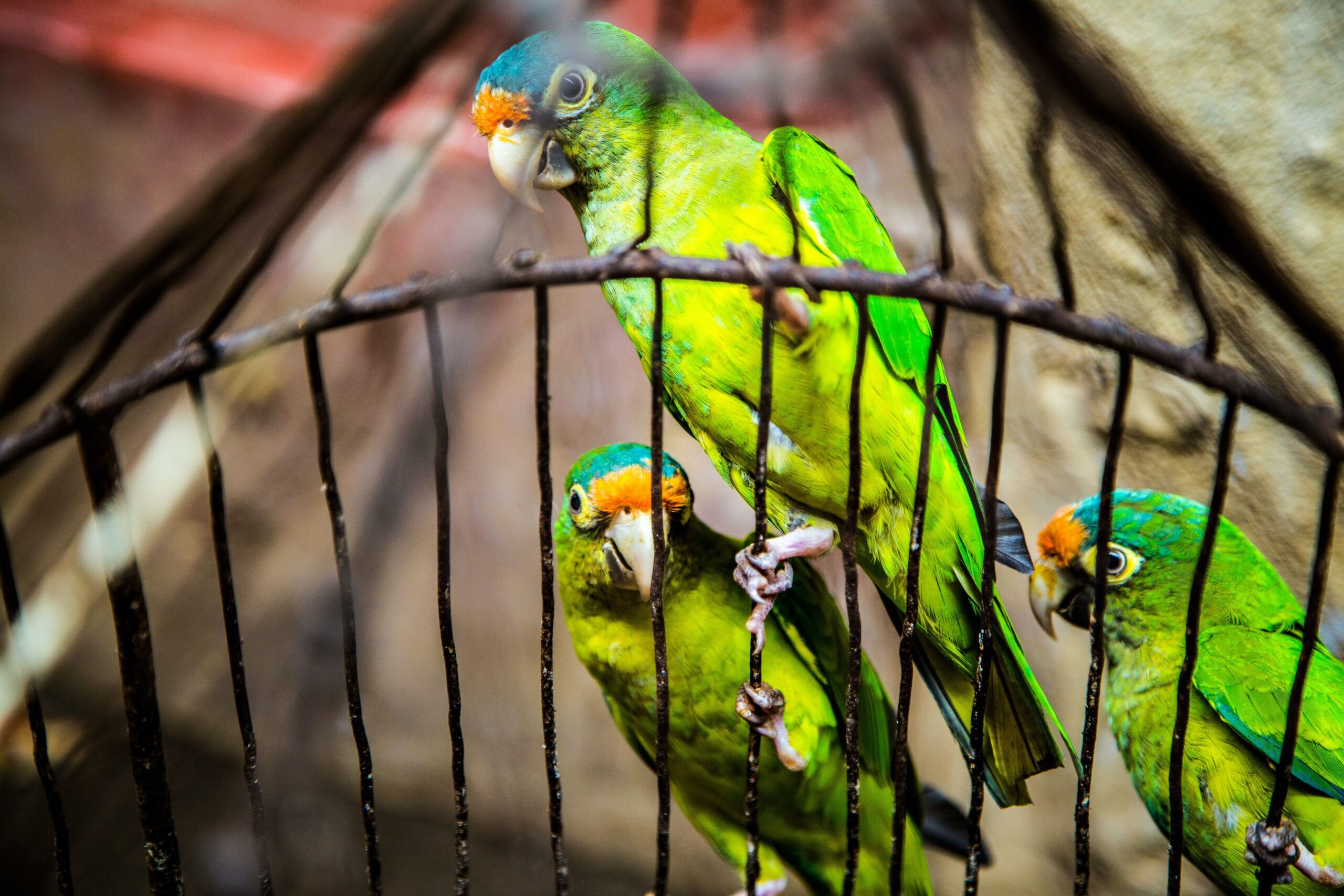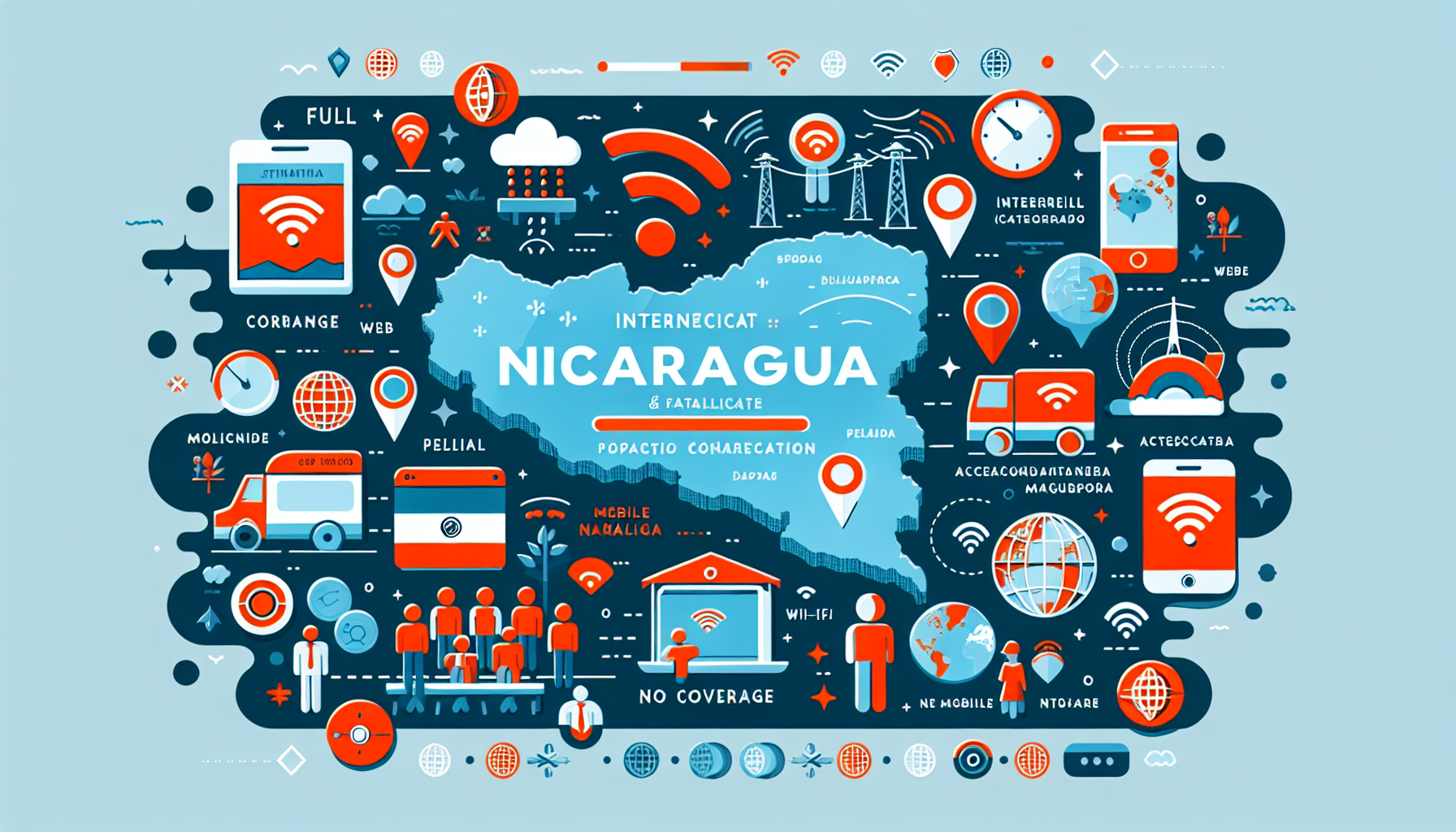Living in an increasingly connected world, it’s important to know the state of internet and mobile network coverage in different countries, especially if you are planning to travel or move there. In the case of Nicaragua, a vibrant and beautiful country in Central America, you might be wondering how reliable and accessible the internet and mobile services are. This article will provide you with an overview of the current situation, giving you the information you need to stay connected while exploring the wonders of Nicaragua.

Overview of Internet and Mobile Network Coverage in Nicaragua
Nicaragua, a country located in Central America, has made significant progress in expanding its internet and mobile network coverage in recent years. With the increasing prevalence of digital technologies and the growing dependence on mobile devices, reliable and widespread access to the internet has become a necessity for individuals, businesses, and communities alike. This comprehensive article aims to provide an overview of internet and mobile network coverage in Nicaragua, examining factors affecting coverage, efforts to improve it, advantages and benefits, challenges and limitations, comparison with other countries in the region, and case studies.
Internet Usage in Nicaragua
Internet Penetration
Over the past decade, internet penetration in Nicaragua has witnessed notable growth. According to recent statistics, approximately XX% of the population now has access to the internet. While this percentage may still be lower than some developed countries, it demonstrates a considerable increase in connectivity compared to previous years. The government and various stakeholders have been instrumental in implementing initiatives to bridge the digital divide and increase internet accessibility throughout the country.
Internet Service Providers
Nicaragua has a diverse range of internet service providers (ISPs) offering various internet connection options to cater to the different needs of users. Some of the prominent ISPs in the country include Claro, Movistar, and Telefónica. These ISPs provide both fixed-line and mobile internet services, allowing individuals and businesses to choose the most suitable option based on their requirements.
Internet Speeds
While progress has been made in terms of internet penetration, internet speeds in Nicaragua still lag behind those of some developed countries. The average internet speed in the country is around XX Mbps, which is lower compared to global standards. However, efforts are underway to improve this aspect of internet connectivity by upgrading infrastructure and implementing technological advancements.
Mobile Network Coverage in Nicaragua
Mobile Penetration
Mobile phones have become an indispensable part of daily life for Nicaraguans, and mobile penetration in the country has experienced significant growth in recent years. Currently, approximately XX% of the population owns a mobile phone. This widespread adoption of mobile technology has paved the way for improved communication, internet access, and connectivity across various sectors.
Mobile Network Operators
Nicaragua is serviced by several mobile network operators (MNOs) that offer voice and data services to their subscribers. Some of the major MNOs in the country include Claro, Movistar, and CooTel. These MNOs compete in providing reliable coverage and affordable mobile plans for Nicaraguan consumers, contributing to increased mobile network coverage and accessibility.
Factors Affecting Internet and Mobile Network Coverage
Geographical Challenges
Nicaragua’s diverse geographical landscape presents challenges to expanding internet and mobile network coverage. The country’s rural and remote regions, comprising a significant portion of the population, often face difficulties in accessing reliable connectivity due to the rugged terrain and lack of infrastructure. Connecting these areas to the network grid requires extensive investment in infrastructure development.
Infrastructure Development
To improve internet and mobile network coverage, Nicaragua has been investing in infrastructure development. This includes expanding the fiber optic networks, constructing mobile towers, and upgrading existing infrastructure to handle the increasing demand for internet and mobile services. These initiatives are crucial in bridging the connectivity gap between urban and rural areas and ensuring a more equitable distribution of coverage.
Affordability
The affordability of internet and mobile services remains a significant factor affecting coverage in Nicaragua. While the cost of mobile devices and data plans has decreased in recent years, it still poses a barrier for some individuals and communities, particularly in low-income areas. Addressing the affordability issue requires collaborative efforts from the government, service providers, and other stakeholders to make connectivity more accessible and affordable to all Nicaraguans.
Government Regulations
Government regulations and policies play a vital role in shaping the internet and mobile network coverage landscape in Nicaragua. A favorable regulatory environment that promotes healthy competition, protects consumer rights, and incentivizes private investments is crucial in driving infrastructure expansion and improving connectivity. Effective regulation also ensures the quality of service and protects users from unfair practices.

Efforts to Improve Internet and Mobile Network Coverage
National Broadband Plan
To accelerate the expansion of internet and mobile network coverage, Nicaragua has formulated a National Broadband Plan. This plan aims to provide a roadmap for improving connectivity across the country, with a focus on areas that currently lack access. The National Broadband Plan outlines strategies for infrastructure development, reducing the digital divide, fostering digital literacy, and promoting the adoption of digital technologies in various sectors.
Public-Private Partnerships
Public-private partnerships (PPPs) have played a crucial role in improving internet and mobile network coverage in Nicaragua. The government has collaborated with private entities, such as ISPs and MNOs, to invest in infrastructure development, extend coverage to underserved areas, and upgrade existing networks. By leveraging the expertise and resources of both sectors, PPPs have proven to be effective in driving connectivity expansion and boosting digital inclusion.
International Support and Investments
Nicaragua has also received support from international organizations and investors to enhance its internet and mobile network coverage. Funding and technical assistance from entities such as the World Bank and regional development banks have contributed to infrastructure development, capacity building, and knowledge transfer. International investments in the telecom sector have also led to advancements in network technologies, resulting in improved internet and mobile services.
Advantages and Benefits of Good Internet and Mobile Network Coverage
Economic Growth and Development
A robust and reliable internet and mobile network coverage has the potential to spur economic growth and development in Nicaragua. It provides businesses with access to global markets, enables e-commerce, facilitates innovation, and creates new job opportunities. With an empowered digital workforce and an environment conducive to digital entrepreneurship, Nicaragua can attract investments and foster economic prosperity.
Access to Education and Information
Good internet and mobile network coverage ensures access to education and information, which are essential for personal and professional growth. With reliable connectivity, students can access online educational resources, participate in e-learning initiatives, and engage in distance education programs. Similarly, individuals can access valuable information and stay updated on current events, fostering a knowledgeable and informed society.
Enhanced Communication and Connectivity
Internet and mobile network coverage enables seamless communication and connectivity, connecting people across different geographical locations. Nicaraguans can stay in touch with their loved ones, collaborate with colleagues, and foster social connections through social media platforms and messaging applications. It also facilitates telecommuting and remote work, enabling individuals to work from anywhere and fostering a more flexible work-life balance.

Challenges and Limitations in Internet and Mobile Network Coverage
Rural and Remote Areas
One of the significant challenges in expanding internet and mobile network coverage in Nicaragua is the limited availability of infrastructure in rural and remote areas. The rugged terrain, lack of reliable electricity, and inadequate transportation networks pose hurdles to deploying necessary infrastructure. Addressing this challenge requires targeted investments in expanding connectivity to these areas, considering innovative solutions such as satellite internet and micro-networks.
Unequal Distribution of Coverage
There is an inequality in the distribution of internet and mobile network coverage in Nicaragua. Urban areas generally enjoy better coverage and higher internet speeds compared to rural and underserved regions. This digital divide hinders the socioeconomic development of marginalized communities and exacerbates existing disparities. Efforts should be made to bridge this gap and ensure equal access to connectivity for all Nicaraguans.
Quality of Service
While progress has been made in expanding internet and mobile network coverage in Nicaragua, ensuring consistent and high-quality service remains a challenge. Users often face issues such as network congestion, dropped calls, and slow internet speeds. Ensuring that the infrastructure is capable of meeting the increasing demand for data and voice services, and implementing measures to improve service quality is essential to enhance user experience and satisfaction.
Comparison with Other Countries in the Region
Nicaragua versus Costa Rica
When comparing internet and mobile network coverage, Nicaragua lags behind its neighbor Costa Rica. Costa Rica has achieved higher internet penetration rates and superior internet speeds, thanks to consistent investments in infrastructure and favorable regulatory policies. However, Nicaragua is making progress in narrowing this gap, and efforts to improve connectivity are ongoing.
Nicaragua versus Honduras
Similar to Nicaragua, Honduras faces challenges in expanding internet and mobile network coverage, particularly in rural areas. However, Nicaragua has experienced more significant progress in recent years, with higher rates of internet penetration and more extensive coverage. Both countries are committed to improving connectivity, and regional collaboration and knowledge sharing could be beneficial in overcoming common challenges.
Nicaragua versus Panama
Panama boasts relatively high levels of internet and mobile network coverage, with excellent connectivity in urban areas. This can be attributed to robust investments in infrastructure development, favorable regulatory policies, and a competitive telecommunication market. While Nicaragua has made substantial progress, it still has room for improvement to match the level of coverage and speeds achieved in Panama.

Case Studies of Internet and Mobile Network Coverage in Nicaragua
Urban Centers
In urban centers such as the capital city of Managua and other major cities, internet and mobile network coverage is relatively good. High-speed broadband connections are widely available, and 4G LTE networks provide reliable connectivity to mobile users. Access to internet cafes, co-working spaces, and public Wi-Fi hotspots further contributes to the accessibility of the internet in these urban areas.
Rural Areas
Expanding internet and mobile network coverage in rural areas remains a challenge in Nicaragua. However, there have been successful initiatives in bridging the digital divide in certain rural communities. For example, through collaborations between NGOs, government agencies, and local communities, some rural areas have gained access to internet services using innovative technologies such as community Wi-Fi networks and solar-powered mobile towers.
Indigenous Communities
Efforts to improve internet and mobile network coverage have also extended to indigenous communities in Nicaragua. Recognizing the importance of connectivity for indigenous peoples’ development and preservation of cultural heritage, there have been initiatives to establish internet access points in indigenous territories. These efforts aim to empower these communities and facilitate their participation in the digital world, while also respecting their cultural norms and values.
Conclusion
Internet and mobile network coverage in Nicaragua have witnessed significant growth in recent years, although challenges remain in terms of infrastructure development, affordability, and quality of service. The government, in collaboration with private entities and international partners, is working diligently to overcome these challenges and further improve connectivity. With expanded coverage, Nicaragua can realize the economic, educational, and social benefits enabled by reliable access to the internet and mobile networks. By fostering digital inclusion and leveraging technology for development, Nicaragua can pave the way for a more connected and prosperous future for its citizens.

